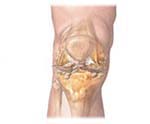About osteoarthritis
21 Jan 2000
 symptoms between 20 and 30 years of age. The symptoms, such as pain and inflammation, appear in middle age. Till the age of 55 it occurs equally in both sexes; after 55 the incidence is higher in women. It is estimated that approximately four out of 100 people are affected. The incidence of osteoarthritis in India is as high as 12 per cent.
symptoms between 20 and 30 years of age. The symptoms, such as pain and inflammation, appear in middle age. Till the age of 55 it occurs equally in both sexes; after 55 the incidence is higher in women. It is estimated that approximately four out of 100 people are affected. The incidence of osteoarthritis in India is as high as 12 per cent. Symptoms
The common regions affected by osteoarthritis are joints of the hands and fingers, hips, knees, big toe, and cervical and lumbar spine. The symptoms can vary from gradual and subtle onset of deep aching joint pain, limited movement, grating of joint with movement, painful bony growths in the finger joints to joint pain in wrist, knee, foot, elbow, low back pain and sometimes joint inflammation.
Osteoarthritis can detected either through a physical examination for joint changes or X-ray of joints in the affected areas. Weight reduction in women is known to reduce the risk of developing knee osteoarthritis.
Treatment
The therapy includes medication, surgery or lifestyle changes. The most commonly recommended medications are non-steroidal anti-inflammatory drugs, or NSAIDs, and in some cases steroids are injected directly into the joint.
Surgery is indicated in severe cases to replace or repair damaged joints. Some of the surgical procedures are:
- Arthroplasty – total or partial replacement of the deteriorated joints with an artificial joints. This is usually done in knee and hip region
- Arthrodesis – surgical infusion of bones, usually in the spine
- Osteoplasty – scrapping of deteriorated bone from the joint
- Osteotomy – changes in the alignment of a bone to relieve stress on the bone or joint
Appropriate home exercise treatment is recommended to maintain joint and overall mobility. Exercises in water are often effective for increasing mobility. Heat and cold treatments, protection of the joints, the use of self-help devices and rest are all recommended. Good nutrition and careful weight control are important. For overweight persons, weight loss will decrease the mechanical strain placed on the joints of the lower extremities.


.webp)




























